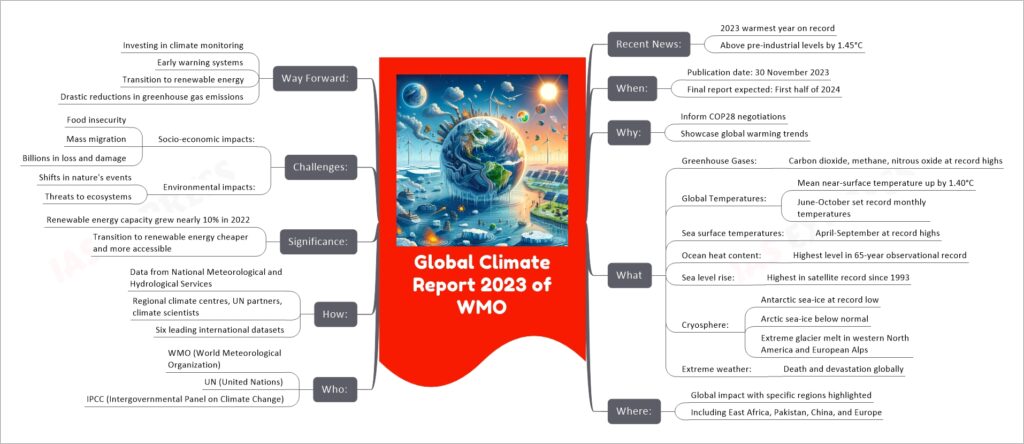Global Climate Report 2023 of WMO

The Global Climate Report 2023 from the World Meteorological Organization (WMO) starkly underscores that 2023 was the warmest year on record, with global temperatures soaring to 1.45°C above pre-industrial levels. This alarming increase spotlights the critical need for concerted global action towards sustainable energy sources and drastic emissions reductions. The report, poised to influence discussions at COP28, aggregates data that paints a dire picture of rising sea levels, shrinking polar ice, and an escalation in extreme weather events, all contributing to significant environmental, economic, and human tolls. Amidst the challenges, the report identifies a silver lining in the growth of renewable energy capacities and the reduced costs of transitioning to such sustainable sources, emphasizing the potential for mitigative action against climate change’s worst effects.
If you like this post, please share your feedback in the comments section below so that we will upload more posts like this.

